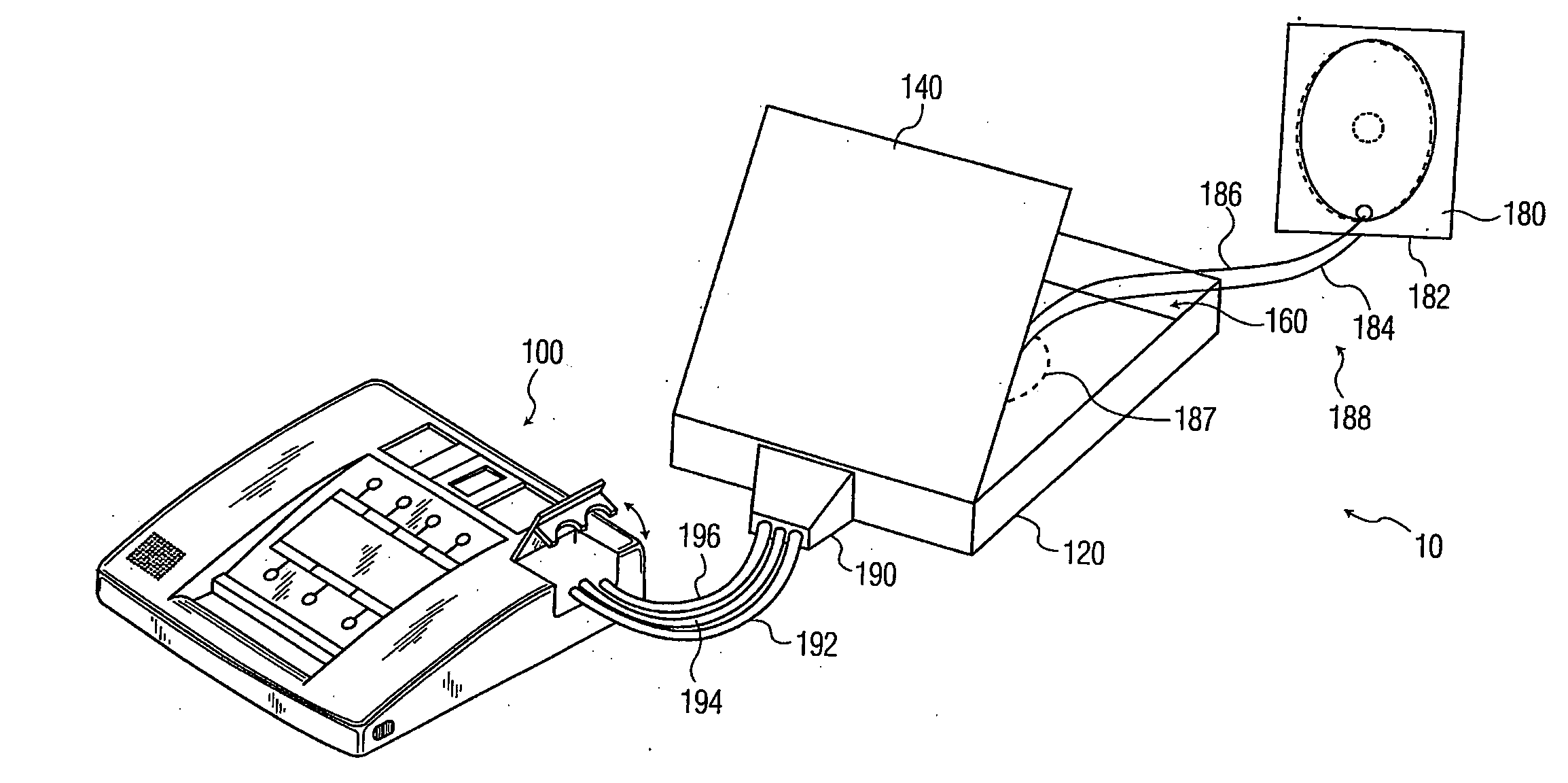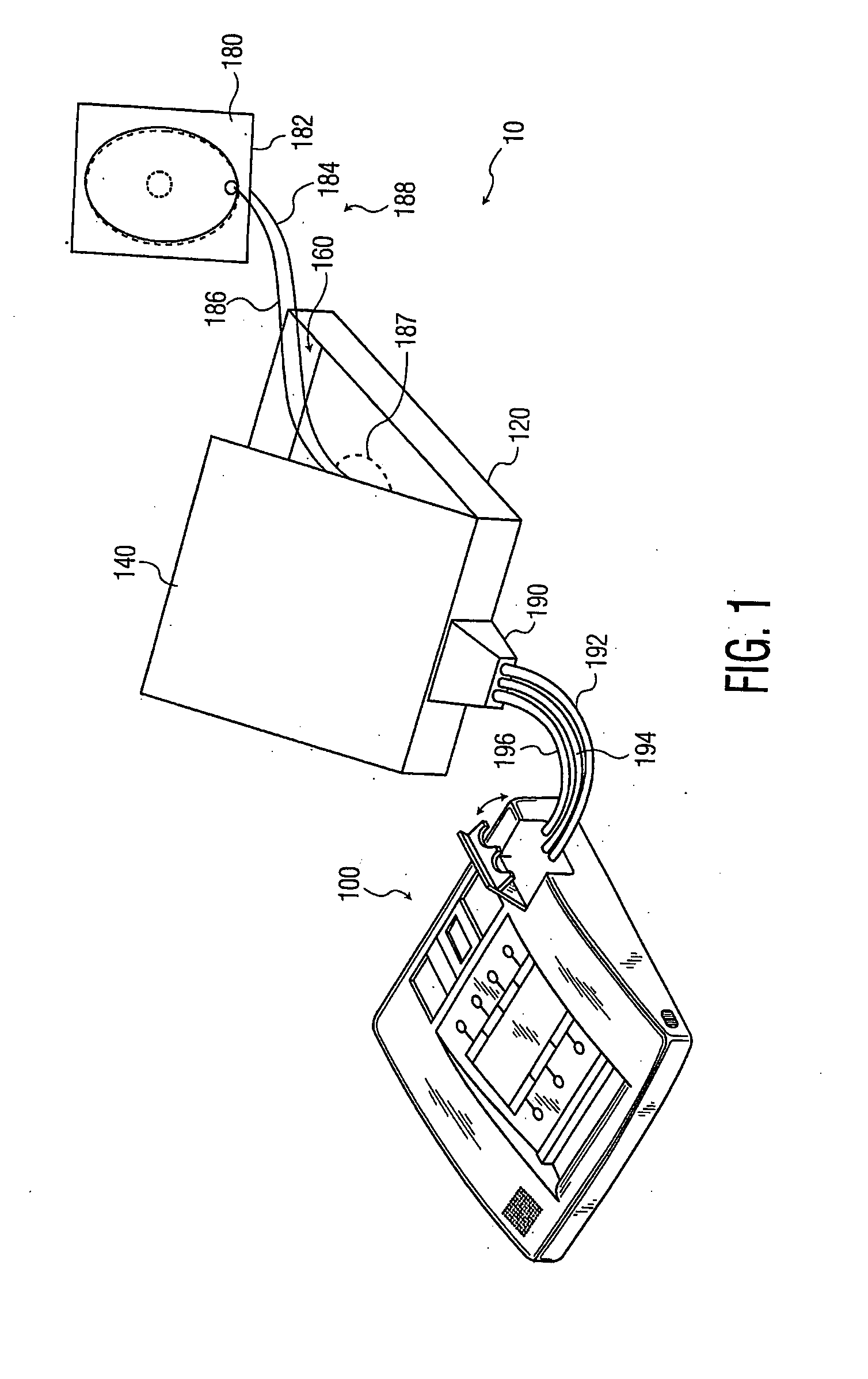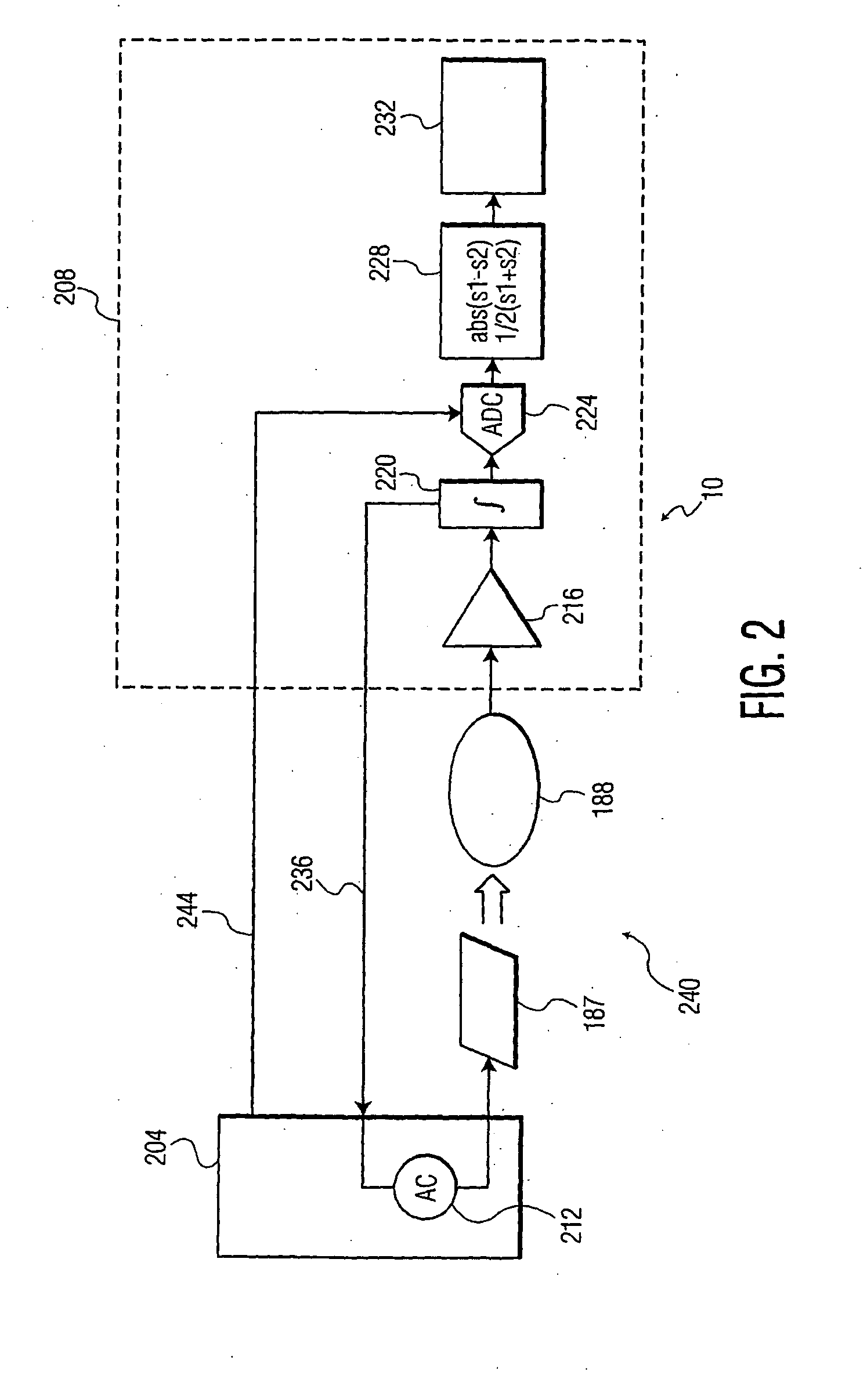Electric- or Magnetic-Field Based Detection of when Electrode Pads have been Handled or Removed from their Package
a technology of magnetic field and electrode pads, applied in the field of electrodes, can solve the problems of wasting precious time and taking much longer, and achieve the effect of accurately advancing the voice prompts
- Summary
- Abstract
- Description
- Claims
- Application Information
AI Technical Summary
Benefits of technology
Problems solved by technology
Method used
Image
Examples
Embodiment Construction
[0026]FIG. 1 portrays an exemplary defibrillation system 19 of the present invention including a defibrillator 100 and a rigid cartridge 120 having a lid 140 shown in the open position. The cartridge 120 further has, defined in part by the lid 140, an electrode compartment 160 in which a pair of electrode pads 180, 182 (the second pad 182 being obscured by the visible one 180) may be stored. The pads 180, 182 have respective lead wires 184, 186 and typically each have on one surface a skin-adhesive, electrically conductive layer such as hydrogel, the hydrogel layers sandwiching an electrically non-conductive release layer. Openings may be provided in the release layer, as discussed in the '478 publication, to provide a pathway for the flow of electric current between the electrode pads 180, 182. An electrical conductor, such as metal foil, serving as one plate 187 of a capacitor is embedded in the bottom of the cartridge 120. The electrode pads 180, 182 together with their lead wire...
PUM
 Login to View More
Login to View More Abstract
Description
Claims
Application Information
 Login to View More
Login to View More - R&D
- Intellectual Property
- Life Sciences
- Materials
- Tech Scout
- Unparalleled Data Quality
- Higher Quality Content
- 60% Fewer Hallucinations
Browse by: Latest US Patents, China's latest patents, Technical Efficacy Thesaurus, Application Domain, Technology Topic, Popular Technical Reports.
© 2025 PatSnap. All rights reserved.Legal|Privacy policy|Modern Slavery Act Transparency Statement|Sitemap|About US| Contact US: help@patsnap.com



